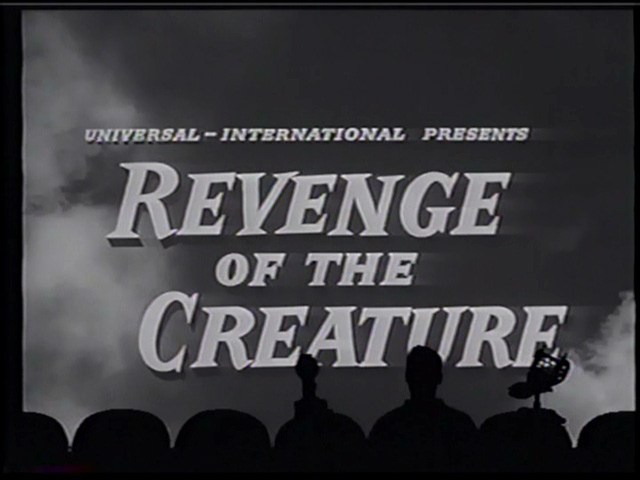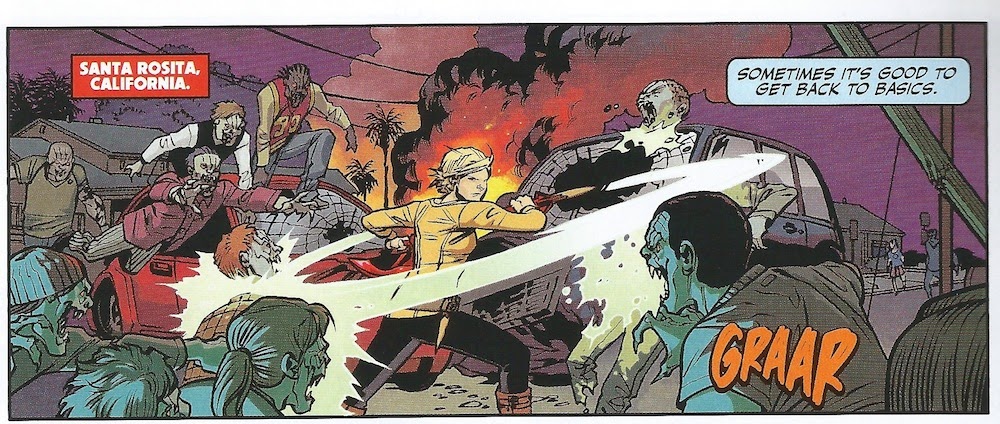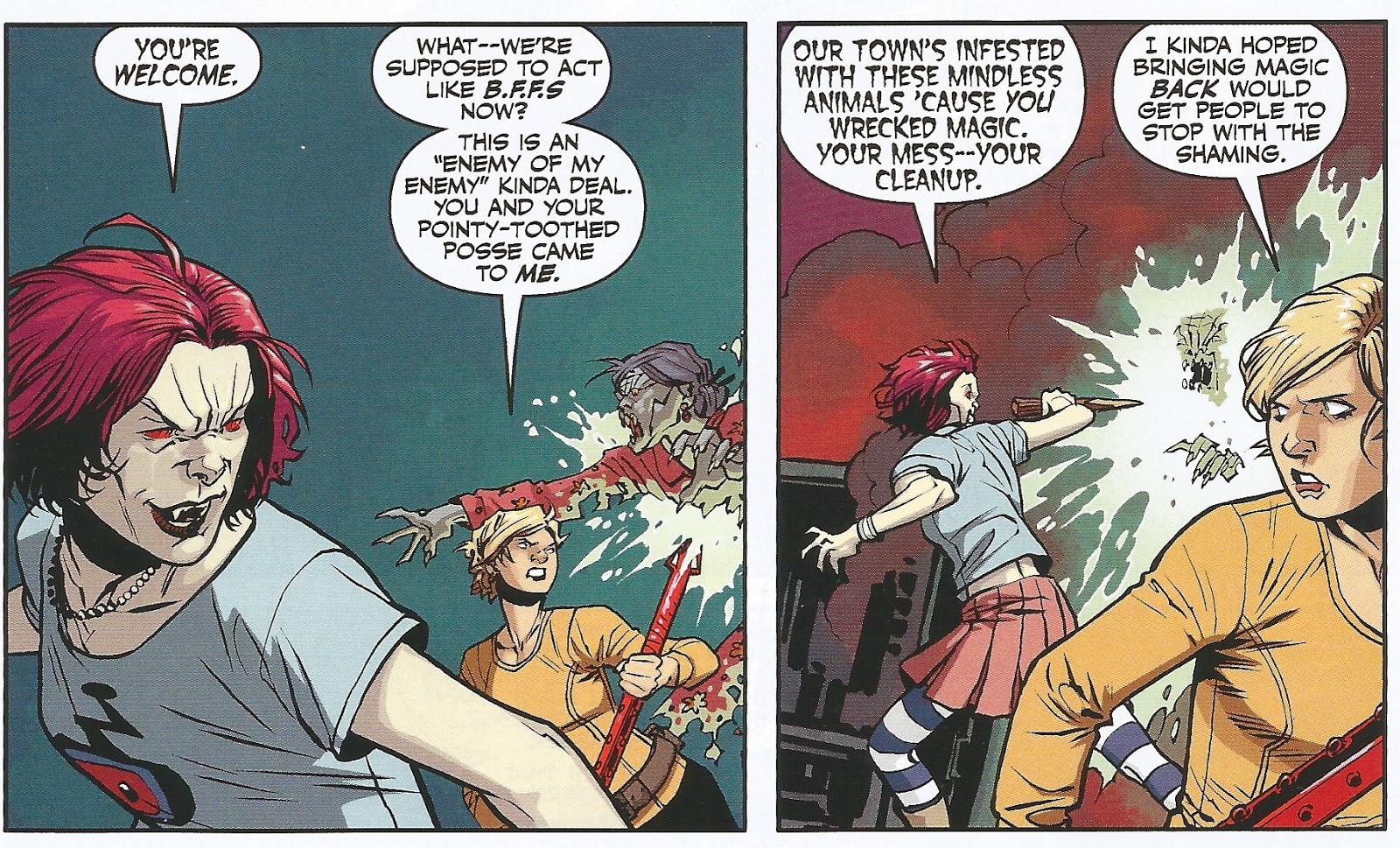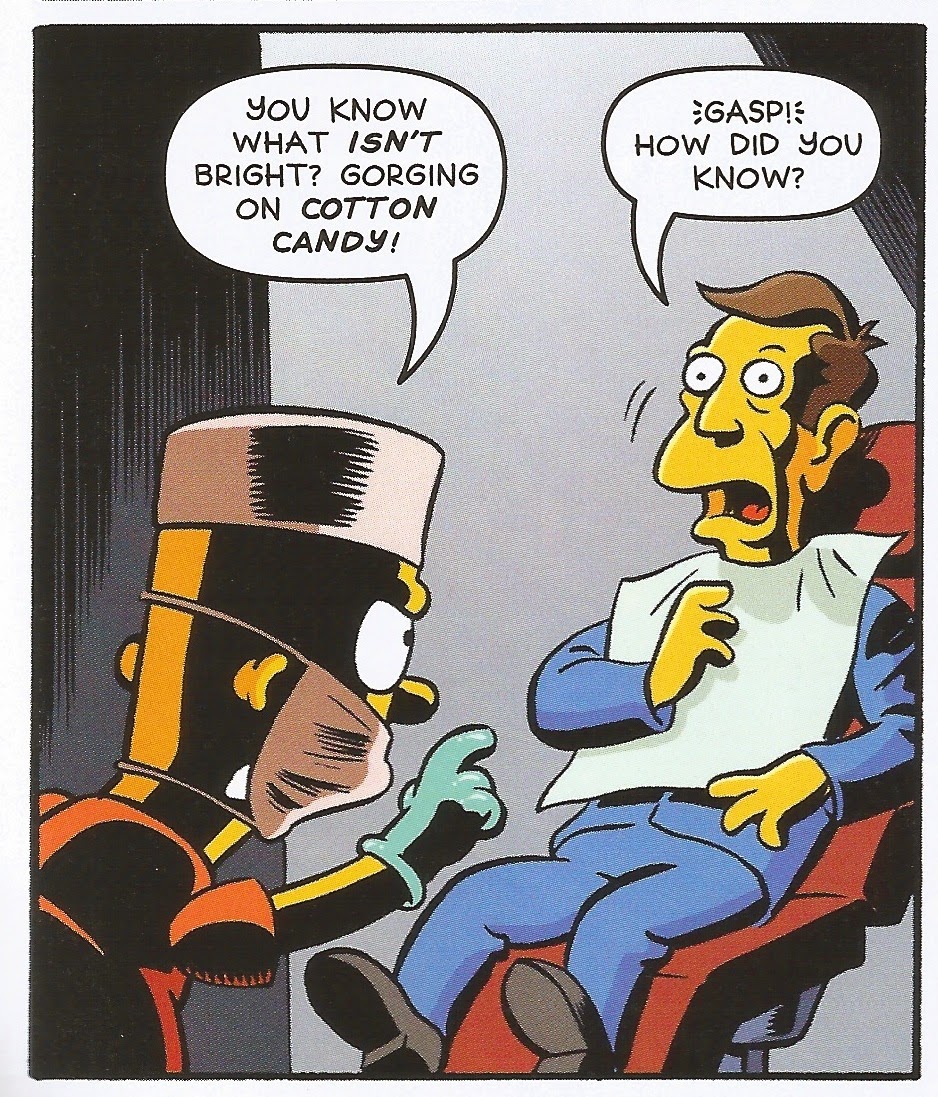Pick of the Brown Bag
March 21, 2014
by
Ray Tate
The Pick of the Brown Bag is on the air! This week I review Bart Simpson Comics, Batman & Aquaman, Buffy the Vampire Slayer, Legendary, Ms. Marvel, Rocket Girl, Simpsons Comics and Wonder Woman.
"...From now on, every girl in the world who might be a Slayer, will be a Slayer. Every girl who could have the power, will have the power. Can stand up. Will stand up. Slayers. Every one of us. Make your choice. Are you ready to be strong?"
By having Buffy speak these words at the conclusion of the revolutionary television series, Joss Whedon did something phenomenal. He severed his ties to his character. She was no longer being written by anybody. She belonged to us. He gave her to us.
Every girl watching "Chosen" could feel empowered. Every male fan could admire the implications. Buffy the Vampire Slayer ended in a world full of Slayers. Buffy would still fight the monsters, but she would no longer rescue victims. There would be no more victims. Women everywhere would now overcome the many terrors that preyed upon them. Real and myth. They would need no prince to ride up on his horse and slay the dragon. They can ride. They can hold the lances, and they have the strength and confidence to use them. In Buffy's world, women became true equals to if not better than men.
When Buffy the Vampire Slayer concluded, Dark Horse announced the end of their successful Buffy the Vampire Slayer comic book. Not to worry though. Joss Whedon would turn up a few years later to introduce a new volume of Buffy the Vampire Slayer that he would write and run. It would act as Season 8.
Here I would like to introduce The Ouroboros Principle:
a tie-in's claim to being canon to a project produced in another medium diminishes as the tie-in builds its own continuity and relies more upon that continuity for storytelling.
Although Season 8 was not canon, I enjoyed most of it. It was a joyful reminisce as well as a logical advancement in the lives of Buffy and the Scoobies. "Twilight" followed by "The Last Gleaming" on the other hand burned Buffy the Vampire Slayer off my subscription list. The story reached a level of inane that would have seized up the brains of the crew of the Satellite of Love, and they specialize in stupidity.
Whedon used these two arcs to target the very thing that made the finale so awe-inspiring, and I hated it. I loathed these two stories so much that I haven't bought a Buffyverse book since. Given that I've purchased every Buffy the Vampire Slayer project since Dark Horse got the license, that's saying a lot.
It's now Season 10 in Buffy the Vampire Slayer and Christos Gage takes over the writing duties. In general, I like Christos Gage's work, and a friend raves about his skill in Angel & Faith; as much as I rave about Tigra. So, I decided to give Buffy another chance. Heck, I gave Gail Simone another chance and another chance and another chance. I can give something I actually like a fair shake, now that allegedly the rubbish has gone.
"New Rules" is the title of this arc, and it couldn't be more aptly descriptive. We first join Buffy in the midst of some old-school slaying with the Scythe.
These creatures aren't exactly new. The average vampire in Buffy the Vampire Slayer wasn't cunning but merely predatory with a semblance of an intelligence jig-sawed from an echo of the personality that was. Arch vampires such as Spike, Angelus, Darla and Drusilla were the exceptions not the rule. So technically, this is just Buffy the Vampire Slayer in comic book form, which is a good. Although, things change.
Even the idea of a vampire helping Buffy isn't entirely out of sorts with the concept. Discounting the vampires with souls, Buffy made temporary deals with ordinary and arch vampires infrequently in the series. However, vampires wanting to kill other vampires is an oddity. I'm willing to go with it though, and as the story unfolds I'm finding a lot of assets: the return of Spike and Faith being major ones but also a near miss return to the status quo.
Magic is back into play. So is Willow. Buffy destroyed magic at the conclusion to "Last Gleaming," and I didn't want to read this book any more. So they brought magic back, with the expected consequences. Fine. Had they not dispensed with it in the first place...Never mind. One thing that hasn't changed apparently is the removal of the "every girl" rule. That irritates me, and it's going to keep this book off my subscription list. However...
If you think that Buffy's hugging Harry Potter, you can be forgiven, but it's Giles, silly. Resurrected and rejuvenated. One may say regenerated. The key though is that however young Giles now may be, he possesses all of his marbles. So, Giles is back, which would have been unnecessary had he not been needlessly killed in the first place, but...I'm letting my bitterness out again. Can't be helped really.
So, here's the deal. I'm not adding Buffy to my subscription list. This is going to be an issue by issue decision. Christos Gage and phenomenal artist Rebecca Isaacs bring a lot of Buffy style to the pages, but it's not enough to make me forgive the Powers That Be for "Twilight" and "Last Gleaming." Gage and Isaacs appear to be undoing these things. Emphasis on things, but I don't feel the same way about the Buffy the Vampire Slayer comic book as I once did. I don't even feel the same way that I did when the Buffy the Vampire Slayer comic series made no claim of canon. So, yeah. It's off the ignore list. It's not even close to being a permanent fixture in the brown bag.
Rocket Girl is basically one major chase in the subway tunnels of New York. It's all dependent on Amy Reeder's frenetic artwork, and because of that, it's fantastic.
Batman and Aquaman--What? You want more thoughts about Rocket Girl? Can't give you any. It's really about Rocket Girl outmaneuvering her opponents, flying better than them, employing awesome aerial tactics, in the subway tunnels. Honest. How you respond to this issue of Rocket Girl will result from how much you love Amy Reeder's illustration, and you should. Okay. There is a spot more of appeal. Rocket Girl herself is an infectious personality. She's boisterous and self-sacrificing. There you go. Buy Rocket Girl.
To tell the truth, I began to think a theme had started to develop midst this week's comic books. After reading Rocket Girl, I tackled Batman and Aquaman. To my shock, I found similarities.
Batman and Aquaman is also more of an artist's book. Patrick Gleason escorts Batman and Aquaman into various levels of Ra's Al Ghul hell as Batman seeks to confront the madman. He's pissed off because Ra's stole Talia's and Damien's bodies. So, baby, this is personal.
Why's Aquaman involved? Heh. Apparently, Ra's used whale wombs to birth his inhuman armies. Exploiting whales. Aquaman. You get the picture. It's a wonder Greenpeace wasn't available for backup. Of course, it's doubtful The Rainbow Warrior would be able to keep up with the King of the Sea and Batman's seacraft.
Anyway, maybe writer Peter Tomasi occasionally called up Gleason and ordered, "Crabs! I want Aquaman to use crabs, God damn it!"
By and large though, Batman and Aquaman is comprised of page after page of Batman and Aquaman beating down Leagues of Assassins. Batman and Aquaman takes all of the strangeness that Grant Morrison brought to Batman and Robin and just repeatedly hits it. I like it. Mick Gray provides the moody inks, and John Kalisz flashes some evocative colors, especially red for rage and green for eerie.
Birds of Prey is just the opposite of Batman and Aquaman. While Ra's Al Ghul also manifests as the Big Bad, these books couldn't be more different in technique. Robson Rocha substitutes for Romano Molenaar this issue, but Rocha doesn't get to do what he's best at in World's Finest. There's just not that much action to orchestrate in Birds of Prey. This issue is a writer's book.
Christy Marx ratchets up the suspense and intrigue. The chapter sets up the expanding war between Ra's Al Ghul and heretofore unknown immortal Mother Eve. Instead of employing the fisticuffs seen in Batman and Aquaman, Marx builds believable machinations that make Batgirl nervous.
Ra's offers Black Canary the means to resuscitate her brain-dead, comatose husband Kurt, in exchange for stepping aside while he kills Mother Eve. His deal with Condor is similar, save it uses Black Canary as a bargaining chip. Batgirl appears to be instinctively aware that something, she doesn't know what, is up with her team. So Birds of Prey is all psychological shenanigans rather than sinew. With all the duplicity in the plot, Marx can be forgiven for this slight tremor of uncharacteristic dialogue from Batgirl.
In the last Wonder Woman, Apollo seemed to fall at the hands of the First Born, but the Sun God had an ace up his sleeve all along.
As something launches an energy attack on Hera,the former goddess, Cassandra and her henchmen attempt to join the First Born on Olympus, using minor god Dio as their door. However, the battle between Apollo and the First Born damages her ship. Fortunately for Cassandra, Cliff Chiang returns, and Wonder Woman has never looked better.
Reunification of all kinds occur in this issue of Wonder Woman, and like Birds of Prey, it as well is setup for the larger war to come. The fuel of the fire is mutual hatred of the First Born. Former enemies at the start of the new volume of Wonder Woman ally, and the implications of Wonder Woman's new role as the God of War offer the promise of an end to the First Born's temporary victory. A meaty precursor.
Another Legendary figure serves as the unwitting catalyst of carnage in Bill Willingham's latest from Dynamite. Red Sonja's sister Magna Spadrossa flies on the airship Victory along with Oscar Goldman and former pilot Steve Austin, along with of course Captain Victory.
Captain Victory was a Jack Kirby creation. Oscar Goldman and Steve Austin need no introduction. This astounding and unexpected mash up is an elegant tickle to the imagination. The group battles none other than, I cannot believe I'm saying this, Dr. Moreau and his beast men.
The draw of Legendary is the continued paring and pitting of antagonists and protagonists that you would never expect to find in the same book. The premiere and the second issue sported a team-up with Vampirella and the Green Hornet. That almost makes sense, but Steve Austin, Oscar and Captain Victory versus Dr. Moreau on behalf of the sister of Red Sonja, if not the actual Red Sonja? That's like being struck in the head with a brick that causes delight instead of damage.
With Willingham's steampunk re-imagining comes the artist Sergio Fernandez Davila. He draws in a realistic manner. So, Captain Victory doesn't look like the Kirby exaggeration, but a long-haired young galoot comporting himself with the dignity of a captain.
Davila offers readers a likeness of Richard Anderson for Oscar Goldman, perhaps to better identify the mustachioed Steve Austin, who differs from Lee Majors. Could be a joke on Iron Man as well. Every hero in armor now must have a mustache. Anyway, as for the lovely Ms. Spadrossa, please observe her boobs. I don't mean that in a prurient way.
Throughout the night-time adventure, Magna is clad in a nightie, and her boobs move like they would in a nightie. It's a lovely expression of body animation from an artist whose realism extends to the motion of anatomy and not just its static depiction. Mind you, that nightie must be made of some wickedly strong material to keep intact all through the adventure.
Ms. Marvel's second issue improves on the first, which wasn't bad at all. Exposed to a mutagenic mist Kamala Khan discovers she possesses the ability to change her shape. This issue, she begins to hammer out the intricacies of these metamorphoses and uses her power to do good. At the same time, she encounters the first problems of maintaining a secret identity. It's very Buffy.
Last but not least, a double dose of Simpsons insanity hits the racks. In the family comic book, Homer discovers that his capacity to hold his breath in a dunk tank filled with Krusty Kola in a typical convoluted fashion nets him the posh job of Chief of Police. Of course, Wiggum takes over Homer's job at the power plant.
The corruption inherent in the Springfield Police Department preys on Homer's conscience, and he decides to actually make the police work, or at least try to work. Homer introduces some practical innovations.
The frequently laugh out loud issue takes advantage of Homer's intrinsic want to do good. Only the crayon must have moved, because his usual ineptitude appears to be dormant in a mostly straightforward attempt for a clean sweep. No worries though. Through an equally convoluted means, the roles of Wiggum and Homer switch back.
In Bart Simpson Comics Bart's status as a trickster serves as the hub for two shorts that are equally funny. In the first vignette, Bart steals Professor Frink's hair tonic experiment for superb mayhem that allows artists Jacob Chabot and Art Villanueva to cut loose with all sorts of hirsute antic.
The tight little tale by Shane Houghton ends with a brilliant punchline comeuppance for Bart and a rare victory for Principal Skinner.
In the next half, Bart's visit to the the scare-mongering dentist seen way back in "Last Exit to Springfield" coincides with Skinner's appointment. This coincidence inspires Bart to change places with his dentist and institute a little cosmetic surgery, via glue, to turn Seymour into a vampire.
The scenario benefits from Hillary Barta's over the top shadows turning the moment into a cross between Nostferatu and Marathon Man.
The beauty of the tale is that Skinner knows exactly what happened to him. Of course, he wouldn't think that he's a vampire, but that doesn't stop writer Ian Boothby from exploiting the general stupidity of Springfield society and the elementary roster's darkest fears.
When Bart realizes his prank has run its course, he saves Skinner by way of shifting vampire paradigms. Best of all, Bart uses the items on hand, which just goes to emphasize the juvenile appeal of the new so-called creatures of the night.



























No comments:
Post a Comment